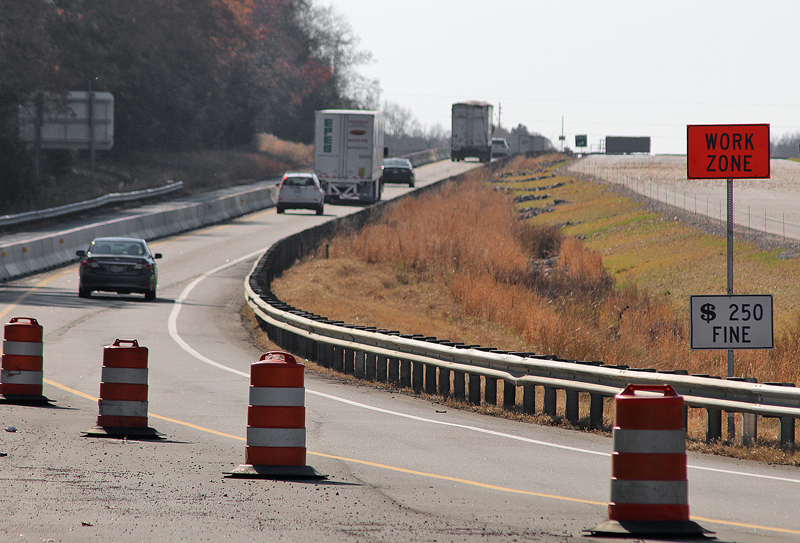At least 7,873 people have died of the minimum of 194,029 confirmed cases in 164 countries and territories worldwide at the time this article was written, according to this situation dashboard from the World Health Organization pertaining to the 2019 Novel Coronavirus…
2019 Novel Coronavirus: Should You Travel Within the United States?
…and because traveling internationally is virtually impossible — if not recommended — perhaps a trip within the United States is in order until this situation is eventually mitigated or dissipates altogether.
Perhaps…

…or maybe not so fast.
The Centers for Disease Control and Prevention does not generally issue advisories or restrictions for travel within the United States — but as confirmed cases of the 2019 Novel Coronavirus have been reported in all 50 states, some areas of the country are experiencing “community spread of the disease.”
Finding yourself in crowded travel settings — such as airports or restaurants — may increase your chances of being infected with the 2019 Novel Coronavirus, if other people within your vicinity have already been infected.
The Centers for Disease Control and Prevention offers several suggestions as of yesterday, Tuesday, March 17, 2020 about which you should consider in your decision as to whether it is safe for you to travel within the United States — although the suggestions can also apply when traveling internationally.
- Is the 2019 Novel Coronavirus spreading in the area at or near your destination?
If the 2019 Novel Coronavirus is spreading in the area at or near your destination — but not where you live — you may be more likely to get infected if you travel there than if you stay home. If you have questions about your destination, you should check the Internet web site of the local health department at your destination for additional information. - Will you or your travel companion be in close contact with other people during your trip?
Your risk of exposure to respiratory viruses like coronavirus may increase in crowded settings — particularly closed-in settings with little air circulation — which may include conferences, public events such as concerts and sporting events, religious gatherings, public spaces such as movie theaters and shopping malls, and public transportation such as buses, subways, trains, and airplanes. - Are you or your travel companion more likely to get severe illness if you are infected with 2019 Novel Coronavirus?
People who are at higher risk for severe disease are older adults and people of any age with serious chronic medical conditions — such as heart disease, lung disease, or diabetes as three of many examples. The Centers for Disease Control and Prevention recommends that travelers at higher risk for 2019 Novel Coronavirus complications avoid all cruise travel and travel by airplane which is not considered essential. - Do you have a plan for taking time off from work or school in case you are told to stay home for 14 days for monitoring yourself or if you get sick with 2019 Novel Coronavirus?
If you have close contact with someone with 2019 Novel Coronavirus during travel, you may be asked to stay home to monitor yourself and avoid contact with others for up to 14 days after travel. If you become sick with 2019 Novel Coronavirus, you may be unable to go to work or school until you are considered noninfectious — although the buildings of many workplaces and most schools are closed anyway. You will be asked to avoid contact with others — including being in public places — during this period of infectiousness. - Do you live with someone who is older or has a serious, chronic medical condition?
If you get sick with 2019 Novel Coronavirus upon your return from travel, your household contacts may be at risk of infection. Household contacts who are older adults or persons of any age with severe chronic medical conditions are at higher risk for severe illness from 2019 Novel Coronavirus. - Is 2019 Novel Coronavirus spreading where I live when I return from travel?
Consider the risk of passing 2019 Novel Coronavirus to others during travel — particularly if you will be in close contact with people who are older adults or have severe chronic health condition — as these people are at higher risk of getting very sick. If your symptoms are mild or you do not have a fever, you may not realize you are infectious.
Summary

If you do decide to travel within the United States, ensure that you take steps to help prevent getting and spreading 2019 Novel Coronavirus — and other respiratory diseases, for that matter — during travel. Otherwise, you may choose to delay or cancel your plans to travel — but that depends solely on your unique circumstances.
Additionally, answers to frequently asked questions pertaining to travel are provided by The Centers for Disease Control and Prevention in case you are still unsure about traveling during the 2019 Novel Coronavirus pandemic.
Keep in mind that your employer may prohibit you from traveling on official business. For example, a ban on domestic travel in the United States for all personnel of the Department of Defense of the United States and their relatives has been in effect since Monday, March 16, 2020 through Tuesday, May 11, 2020 in response to the 2019 Novel Coronavirus.
This article is the latest in a series pertaining to the 2019 Novel Coronavirus in an effort to get the facts out with information derived from reliable sources.
Other articles at The Gate which pertain to the 2019 Novel Coronavirus include:
- $250 Billion Bailout Requested by Lodging Companies
- Countries With Travel Entry Restrictions Due to 2019 Novel Coronavirus: A Comprehensive List
- $50 Billion Bailout Requested by Airlines; Trump to “Back the Airlines 100%”
- Global Level 3 Health Advisory Issued by Department of State of the United States
- All Domestic Travel Banned For Personnel of Department of Defense of the United States
- March 15 2020: Checking Back In on 2019 Novel Coronavirus — My Opinions, If Anyone Cares
- Hotel Deploys Robots to Sanitize and Disinfect Rooms
- Ireland and the United Kingdom Added to Suspension for Most Foreign Nationals For 30 Days From Europe to the United States
- Change Fee and Cancellation Fee Policies and Waivers of 46 Airlines Due To 2019 Novel Coronavirus
- Up to 12 Ounces of Hand Sanitizer is Permitted Through Airport Security Checkpoints
- I Swear, If I Receive One More Message About How My Health and Safety are Their Top Priority…
- Four Reliable Resources For Travel and the 2019 Novel Coronavirus
- Just Shut Down the Entire Planet. Problem Solved?
- Stop the Hyperbole: Travel is NOT Banned Between the United States and Europe…
- Travel From Europe to the United States Suspended for Most Foreign Nationals For 30 Days
- My Unproven Secret to Not Contracting a Virus in Years
- Pandemic of 2019 Novel Coronavirus Declared by World Health Organization
- Official Warning Issued Against Travel by Cruise Ship Due to 2019 Novel Coronavirus by the Department of State of the United States
- Now the Entire Country of Italy is Under Quarantine
- 16 Million People Quarantined in Northern Italy
- Are Masks Effective Against 2019 Novel Coronavirus That People are Stealing Them?
- As Many as 46,000 People May Have Died in the United States Alone From…
- Lodging Companies Issue Travel Waivers and Elite Status Extensions 2020 Due to 2019 Novel Coronavirus
- Update: More Airlines Suspended Change and Cancellation Fees 2020 Due To Coronavirus
- Airlines Which Suspended Change and Cancellation Fees 2020 Due To Coronavirus
- Should You Be Concerned About Coronavirus?
- Travel Alert February 2020: Italy Now Affected by 2019 Novel Coronavirus
- Travel Alert February 2020: Northern Italy Now Affected by 2019 Novel Coronavirus
- Travel Alert February 2020: South Korea Now Affected by 2019 Novel Coronavirus
- A Deal to Antarctica Because of 2019 Novel Coronavirus — But Hurry
- Update: Do Not Travel to China Due to 2019 Novel Coronavirus, Says United States Department of State
- Travel Alert January 2020: Hong Kong Now Affected by 2019 Novel Coronavirus
- Update January 2020: Additional Airlines Issue Travel Waivers for 2019 Novel Coronavirus
- Travel Alert January 2020: 2019 Novel Coronavirus Affecting Air Travel
All photographs ©2014 and ©2017 by Brian Cohen.

